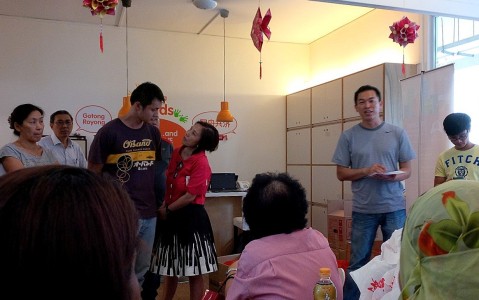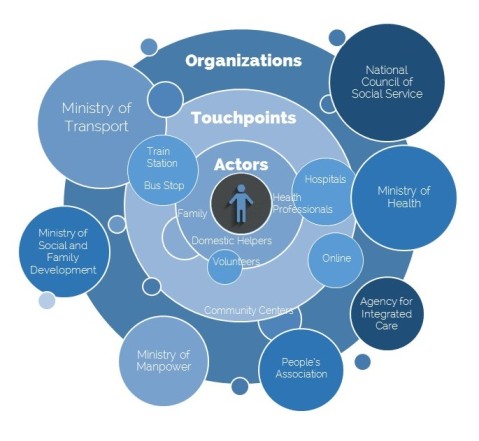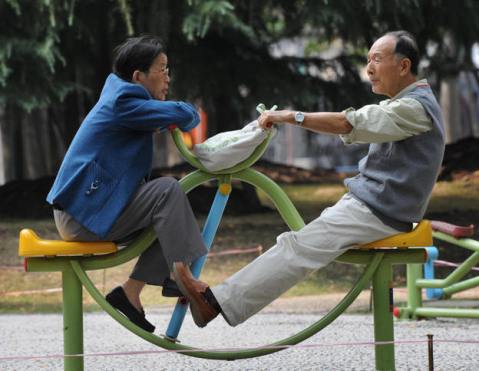Update From Modern Aging Singapore: Kickoff Workshop

Modern Aging Singapore kicked off in the middle of August. So far, the program has seen active participation and support from aspiring entrepreneurs. About three hundred students, health practitioners, researchers, and members of the public attended the Kickoff Workshop held at the NUS I Cube Building Auditorium on the morning of August 15.
Attendees were treated to four presentations from experts in aging and business: Overview of Aging by Prof. Angelique Chan of Duke-NUS Graduate Medical School, Healthcare and Business by Dr. Jeremy Lim of Oliver Wyman, Home and Center Based Care by Dr. Ng Wai Chong of the Tsao Foundation, and Product Design for Seniors by Hunn Wai of design firm Lanzavecchia + Wai.
 Prof. Chan highlighted some key trends and statistics on aging in Singapore. One surprising point was the high prevalence of social isolation among seniors here. This finding spurred aspiring entrepreneurs to think of novel solutions to address this trend.
Prof. Chan highlighted some key trends and statistics on aging in Singapore. One surprising point was the high prevalence of social isolation among seniors here. This finding spurred aspiring entrepreneurs to think of novel solutions to address this trend.
Dr. Lim went on to outline the aging sector in terms of business potential. One suprising finding, according to theNational Center for Policy Analysis, is the average net worth in 2010 was 848,000 USD for sixty five to seventy four year olds and nearly seven hundred thousand dollars for those above seventy five. These figures encouraged aspiring entrepreneurs to enter the aging sector.
Dr. Ng discussed the current status of home and center based care in Singapore. He highlighted specific needs in these care settings frequently used by seniors. This discussion allowed aspiring entrepreneurs to hone in on key areas of need and address these pain points. For example, some challenges in these settings include the quick and painless transferring of patients from bed to chair and vice versa, and increasing the time health practitioners can spend with seniors.
Mr. Wai rounded off the presentations with insights from product and design perspectives. He introduced examples of good design for seniors, such as mixed use canes and walkers, or stylish back braces. This presentation especially inspired aspiring entrepreneurs to consider seniors’ lifestyles and tastes when introducing new product ideas.
In addition to expert presentations, attendees also heard two senior role models share their life experiences and lessons. Younger members of the audience seemed glad to hear the wise advice dispensed by the seniors. The kickoff event concluded with a networking lunch. Participants became so engrossed in conversations around aging that they lingered past the scheduled end time.
Currently, Modern Aging Singapore has progressed to the business curriculum and selection phase. The top twenty teams have been selected and paired with industry mentors to hone their business ideas. The twenty teams will soon be pitching at the semifinals judging event for the top six spots. Meanwhile, all participants of Modern Aging Singapore are able to access the same business and aging curriculum on the Modern Aging Online Learning Portal to continue learning and improving their business ideas. If you would like to access the Portal, please write an email request to info@modernaging.org.
Find out more about Modern Aging, at www.modernaging.org.
Informal Child and Elder Care in Singapore: South Central Community Family Service Center
At ACCESS Health International, we like to feature good examples of community and elder care. A recent visit to the South Central Community Family Service Center in Singapore reveals a thriving space where different generations of neighbors visit, work, and play with one another.
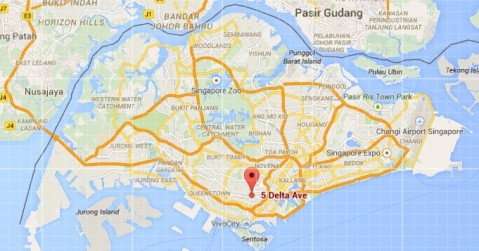
The South Central Community Family Service Center is located in the southern part of Singapore. The Center is shown as a red dot on the map.
The South Central Community Family Service Center is just one of many other Family Service Centers in Singapore. Family Service Centers are an important part of the “Many Helping Hands” approach of the Singapore government toward social services. The Many Helping Hands approach emphasizes the involvement of multiple sectors in providing for the social welfare needs of people. Family Service Centers are run by Voluntary Welfare Organizations and are supported by the Ministry of Social and Family Development, the National Council of Social Services, Community Chest, or the Singapore Totalisator Board [1]. This is one way the government supports and encourages care provision by nongovernmental entities.
The South Central Community Family Service Center is unique in one respect. In January 2013, the Center became an independent entity with its own board of directors. The mission of South Central Community Family Service Center remains the same: to promote the wellbeing and self reliance of families. The main focus is supporting lower income individuals and families in the Bukit Ho Swee, Henderson, Redhill, and Indus Road neighborhoods. Between 2013 and 2014, the Center managed an average of four hundred cases. Casework involves counseling or referral to specialized services. For example, children from families lacking in basic necessities may face challenges in schoolwork or dealing with classmates. Center staff can counsel children or their parents on managing these problems. Where necessary, families are referred to other services, such as specialized psychiatric help or financial aid.
Besides casework, another focus of the Center is community engagement. To this end, Center staff organize events to involve nearby residents and create community spirit. As the Center is located on the ground floor of a block of residential flats, it is accessible and open to residents in the neighborhood. Our visit took place during the Lunar New Year period. As seen in the photo, festive decorations lining the entrance created a welcoming and friendly atmosphere.
Outreach worker Erwin showed us around the Center. Erwin explained to us that a guiding principle for the Center and staff is community cooperation and participation. This principle is informed by the Asset Based Community Development approach to community work. This approach ensures sustainability because initiatives are driven by the residents themselves. Residents volunteer to help care for their neighbors’ elderly relatives or children. Residents worked together to plant a community garden full of useful medicinal herbs.
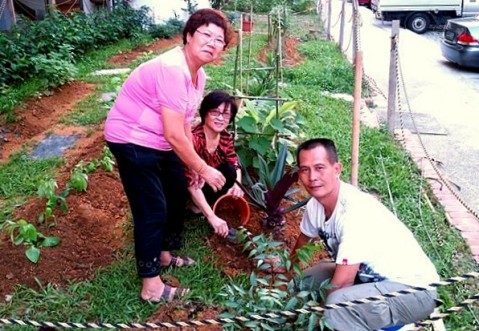
Residents take ownership of the community garden and bond while caring for the plants. (Photo: South Central Community Family Service Center)
The Center is a collaborative environment. The community garden is a visible fruit of this collaborative environment. The garden had been an empty space in front of the Center. Center staff wanted to galvanize residents to work on a common project. Residents contributed ideas and voted for the winning project: a medicinal herb and vegetable garden. Because the idea came from residents, the garden has been adopted and cared for by residents.
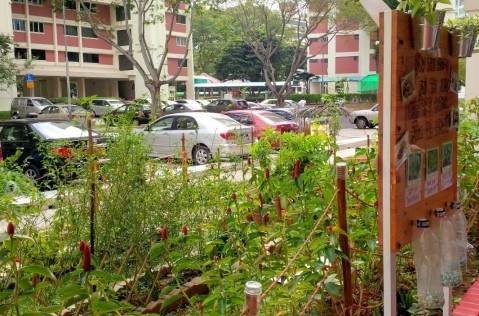
Residents contribute ideas to keep the garden fresh and growing. Residents can vote for the next plant type by placing a marble in the respective bottle.
In the picture above, one can see a board where residents can vote on the next plant type. At the time of visit, sweet potato leaf was the leading candidate. The board itself was constructed by hand by a resident who is a carpenter by trade.
Inside the Center hangs another board, where residents can request items or services they need, or post offers of items or services they can give. The platform helps match community resources to people who need them most.
Residents streamed in and out of the Center throughout our visit. Erwin pointed out a pair of young siblings playing games on the couch. Erwin told me the siblings come to the Center after school ends to wait for their parents to get off work. I also saw groups of elderly chatting with one another at tables and chairs. The open space created by the South Central Community Family Service Center helps with informal child and elder care as residents look out for and engage with one another.
Near the end of our visit, there was a briefing for a large group of about twenty five volunteers, both young and old. They were preparing to give out yusheng packs to shop owners and residents at the Lengkok Bahru neighborhood. This showcased lower income families and children as goodwill ambassadors as part of this “Lo Hei Outreach”. The yusheng salad is traditionally eaten during the Lunar New Year, and Lo Hei is the dialect term for tossing the salad. Family and friends gather to Lo Hei together, signifying prosperity and togetherness. The briefing was punchy and positive with the staff recognizing the contributions of volunteers.
The South Central Community Family Service Center is an example of successful informal community and elder care. The staff and volunteers have created an open venue where residents are encouraged to join community activities and contribute their talents. Can their model of community involvement and ownership be replicated elsewhere? For example, could elder care as a larger industry move toward being more community based and operated? Share your thoughts with us by leaving a comment.
1. The Singapore Totalisator Board, also known as Tote Board, manages the surplus funds generated by Singapore Turf Club and Singapore Pools. They channel funds in support of various causes in Singapore such as arts and culture, social services, community development, education, health, and sports.
Taking a Cue from Lee Kuan Yew on Aging Well
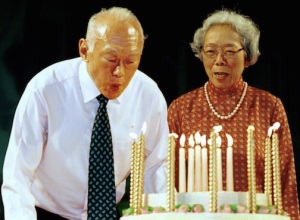
Mr. Lee celebrating his seventy seventh birthday with his wife, Kwa Geok Choo, on September 16, 2000. (Photo: Edward Wray, Associated Press)
Lee Kuan Yew, the founding prime minister of Singapore, passed away on Monday morning. As the first prime minister, Mr. Lee helped shape many policies in the formative years of independence. As the Singapore population matured, aging became an issue of concern for Mr. Lee. He shared some personal views on aging at a forum in 2010, when he himself was close to ninety.
Mr. Lee said, “I think the most important single lesson I learned in life was that if you isolate yourself, you’re done for. The human being is a social animal – he needs stimuli, he needs to meet people, to catch up with the world.”
Mr. Lee also said, “You must have an interest in life… If you’re not interested in the world and the world is not interested in you, the biggest punishment a man can receive is total isolation in a dungeon, black and complete withdrawal of all stimuli, that’s real torture.”
Indeed, part of aging well is maintaining social support and engagement in activities. Population trends in Singapore indicate that, in the future, many more elderly will be single and living alone. We must create opportunities to help these elderly avoid isolation.
How can this be done? Many are thinking of solutions. The ACCESS Health Singapore team spoke to a professor in architecture. She explained to us that simply adding a small space to common corridors for residents to sit and mingle can draw them out of their flats. Eventually, she said, the residents may venture down their blocks and into the community.
There must be other ways to help our elderly age well. People from all sectors are thinking of novel ways to make a difference in the Singapore silver industry, a promising development. Mr. Lee’s advice was for individuals to take an interest in the world and to avoid isolation. How we can help is to think of creative ways to encourage these individuals to do so.
Perhaps then we can live out Mr. Lee’s wish, “Have a purpose driven life and finish well, my friends.”
How Singapore is preparing for future elderly care
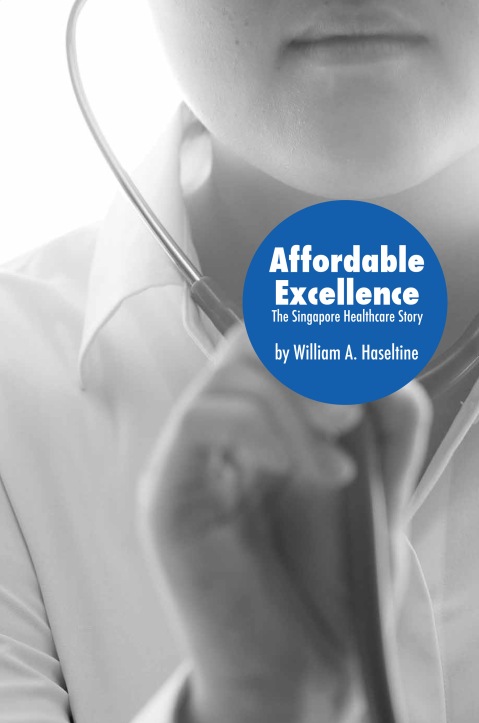
Senior-friendly Smartphones
In the case of increasing life expectancy and low fertility rates, the percentage of elderly in Singapore is on a rise. The percentage of elderly aged 65 and above increased from 7.3% in 2000 to 9.3% in 2011.

This percentage is expected to rise up to 18.7% by 2030. This shows that the percentage of elderly in Singapore has been and will be increasing drastically over the years. Indeed, the ‘silver tsunami’ is approaching Singapore.
With the growing concern for the elderly, ideas and innovations are constantly tapped into to find new ways to counter the problems the elderly faces.One such take was by a Singapore-based sustainable business incubator, Silverline — which has decided to take on an initiative with SingTel. While several elderly are unable to afford to buy and use smartphones due to the price and perhaps not being IT-savvy enough, Silverline has offered an ingenious way which can kill two birds with one stone. One, it solves the problem the elderly faces. Two, it also reduces e-waste, which is an environmental problem.
“The mobile phone industry works by enticing customers to swap their old phones for new ones in just a year or two. That is a tremendous waste. Electronic devices can leak toxic chemicals once they are disposed of.” – Silverline
Sliverline saw an opportunity in these wastes and decided to turn it into their advantage to them. By introducing a new policy, SingTel customers who are renewing their contract and purchasing a new smartphone with SingTel will be offered the option of gifting their old devices to a senior citizen. In this way, both parties are able to gain something out of it. When the user decides to get the newest model, his/her older phone still can come into good use and benefit the society (in this case, the elderly) and also the environment (in this case, decreasing e-waste).
By collaborating with SingTel, the user also gets to enjoy the benefits such as having a cut in their monthly bills.
Therefore and however, these smartphones that the elderly can expect are not just any ordinary smartphones. They are refurbished second-hand devices that come along with senior-friendly apps installed.
An example of such an application is Connect, which presents the contact list in a visual format to aid the visually impaired. Another senior-friendly application, Well Being, provides reminders for taking medicine, drinking water, and doing exercise.

These are just some of the apps that are available out of several others, which can be found here.
Furthermore, if a user decides to nominate a senior citizen they know (normally it would be their parents), a refurbished smartphone by Silverline will be provided on the spot — with the addition of a mobile plan being fee for the senior citizen and will be added to the customer’s existing monthly mobile bills. This in turn for the business parties involved will create a new market.
The solution also poses some challenges to be overcome. Even though social workers are available to help out the elderly in using the smartphones, it will still take time for the elderly to get used to it.
Here is a video on how one of the many elderly is being impacted.
http://www.youtube.com/watch?v=9ug8wSAGfSU&feature=player_embedded
We believe that this project is the start of a neat solution socially, environmentally and economically.
Sources and references:
1) http://www.singstat.gov.sg/stats/themes/people/popinbrief2011.pdf
4) http://www.intmath.com/blog/singapores-population-bubble/808
5) http://www.youtube.com/watch?v=9ug8wSAGfSU&feature=player_embedded
Palliative Care in Singapore
According to the WHO definition of Palliative Care: “Palliative care is an approach that improves the quality of life of patients and their families facing the problem associated with life-threatening illness, through the prevention and relief of suffering by means of early identification and impeccable assessment and treatment of pain and other problems, physical, psychosocial and spiritual” (WHO Definition of Palliative Care[1]).
In Singapore, palliative care started as a grassroots movement in the mid-1980s to meet the needs of patients dying of cancer at home. The first home care team worked out of a university lecturer’s apartment in Gillman Heights. No doctors were trained in palliative care and there were limitations on the kind of care and setting where care could be provided.
Things changed a few years later. Singapore saw its first doctor trained in palliative care in the late 1980s. The first palliative care home provider – the Hospice Care Group – was formed in 1987. In 1988 Assisi Home and Hospice was established. This was followed by Agape Home and Hospice and the Hospice Care Association in 1989, Dover Park Hospice in 1995, Metta Hospice Care in 2001 and the palliative arm of Bright Vision Hospital in 2002. In 2007, the Lien Centre for Palliative Care was established to promote research and education in palliative care in Singapore and the region. Since 1996, the restructured hospitals have also been building up expertise to support palliative care for their patients.
Palliative care has now advanced to the point that it can help manage and stabilise patients’ symptoms, and reduce their suffering. Due to greater and more structured training opportunities for healthcare professionals (palliative care is a subspecialty of medicine now), and a steady expansion of palliative care services, even treatments such as blood transfusions and intravenous infusion can be provided to patients in hospice care.
Palliative care is primarily provided by hospices (at an inpatient, home, or day-care setting). There are four palliative care providers that offer inpatient hospice care, six providers that offer home hospice care and two that offer day hospice care.
Many restructured hospitals, as well as some community hospitals and nursing homes have also developed palliative care services, including to meet the needs of certain specialty groups, such as children (for example, in KK Women’s and Children’s Hospital). These services have largely evolved to meet the needs of patients admitted; the provision of palliative care services is not the main function of these institutions.
Palliative care is financed primarily by government subsidies and charity dollars. Most home hospice services are free-of-charge for patients. Day hospice services, hospital-based services, and inpatient hospice services are offered at nominal fees, which can also be partly or fully waived depending on the patient’s financial ability.
Palliative care education is provided by a variety of organisations and institutions. For doctors, palliative care is part of the undergraduate medical curriculum. Subspecialty training is also available for some residency programmes. Palliative care is also incorporated in the formal generalist nursing curriculum for nurses and there are options for them to obtain an advance diploma in palliative care at the polytechnics. A number of different training programmes/certificates on palliative medicine/care are also run by different organisations for all health professionals (doctors, nurses, pharmacists, social workers and other health allied workers).
Public awareness and understanding of palliative care is still quite low. Many people still associate palliative care with giving up hope and treatment. The Singapore Hospice Council recently launched a new community outreach program to increase public awareness of inpatient, home and day hospice services available for end-of-life patients here.
Healthcare providers’ willingness to discuss end-of-life care and dying is also low. Research suggests that, even in hospitals, there seems to be some unwillingness of both patients and healthcare staff to talk about the potential of death. Since 2009, health professionals have started utilising Advanced Care Planning (ACP) as a tool to start having open discussions with dying patients and their families. ACP is currently being piloted at a few restructured hospitals, nursing homes and other end-of-life programmes.
These changes as well as some others implemented suggest that although willingness to discuss death still remains low, there has been improvement over the last few years.
In late 2011, MOH commissioned the Lien Centre for Palliative Care at Duke-NUS Graduate Medical School to formulate a National Strategy for Palliative Care in consultation with key stakeholders in the healthcare system. The report reaffirms the important role of palliative care in the health sector as well as the importance of delivering such care in a coordinated and affordable manner. The report lists ten strategic goals and associated recommendations that address the importance of supply-side interventions such as training and ensuring adequate capacity as well as demand-side interventions such as the need for greater awareness and research. It also calls for greater leadership and governance to guide the development of palliative care services in Singapore.[2]
MOH recently accepted the report on the national strategy for palliative care. Presently, the Government has committed to expand the workforce and hospice care services to make end-of-life care more accessible to patients by committing to:
- Incorporate a greater degree of palliative care training into courses offered in universities, polytechnics and Institutes of Technical Education.
- Expand public education drives and awareness of the services to the terminally ill.
- Promote specialised research and improve understanding of palliative care, by learning and adapting models used abroad.
- Set up an implementation taskforce to put the strategies set forth by the Report on the National Strategy for Palliative Care into action in a country-wide coordinated manner.
- Ensure that palliative care remains a key part of each regional health system.
Singapore’s ageing population and the effect it will have on epidemiological trends (increased burden of non-communicable disease, frailty and dementia, etc) and the subsequent needs required of the health system (increased demand for preventive services, long-term and end-of-life care), coupled with trends of increasing affluence, demand for more choices and declines in informal care-giving structures, suggest that the case for a greater role for palliative care, to meet the needs of patients who will face terminal illnesses, is strong.
Thus, a National Strategy for Palliative Care is welcome. To fully develop, palliative care needs more measures to promote the awareness of palliative care options, ensure that there are an adequate number of skilled healthcare professionals in the sector, introduce standards of care
across providers and settings, improve the coordination of care and ensure that there is adequate capacity to meet the demands for its care.
A greater role of palliative care will help increase the options, visibility, medical and social support for people facing end-of-life and enable decision-making based on preferences. It also allows for a more efficient use of resources for the health system.
Sources
HLC 2012. Briefing: Palliative Care in Singapore, July 26, 2012 version. Healthcare Leadership College, MOHH Holdings, Inc., Singapore.
Lien Centre for Palliative Care, Duke-NUH Graduate Medical School “Report on the National Strategy for Palliative Care,” Submitted to the Ministry of Health, Singapore, 4 Oct 2011.
World Health Organization (WHO). WHO Definition of Palliative Care .Accessed April 27 2012
[2] 2011 Report on the National Strategy for Palliative Care http://www.dukenus.edu.sg/sites/default/files/Report_on_National_Strategy_for_Palliative_Care%205Jan2012.pdf
Its hard to match the care for our seniors
Be it organizing activities with the aim of promoting active lifestyle, improving assistance provided for the aged, or getting senior citizens to volunteer, the Community Development Councils (CDCs) in Singapore might just have it all. In Singapore, the CDCs aim to work towards a single goal: to champion social support for the silver population. In recent events, the CDCs organized “Caring for the Silver Community” project, where its main focus is on senior citizens aged mainly 65 and above. Studies have shown that by 2030, the amount of such senior citizens in Singapore will triple to about 900,000.
The trends of seniors that are living alone are on the rise, and many of whom face the risk of social isolation. In order to tackle such risks, the government sets aside more funds for the long-term care sector and also encourages families to continue to care for the seniors living with them. Such initiatives by the government through CDCs aim to raise awareness and engage the community in helping to enhance social support programmes for the seniors.
In the recent years, the CDCs have launched quite a number of programmes- one of which is known as a fall prevention programme, with a main aim to help seniors live independently in the community. The CDCs also work hand in hand with the local colleges and have helped to install safety features for close to 3,000 elderly beneficiaries. In the years to come, we can also expect a higher range of services to be provided by the CDCs.
This can be seen as a great initiative by the community to provide social care for the seniors, as well as bond and socialize them with other members of the community.
Source: TODAY newspaper, http://www.cdc.org.sg/
Image source: http://news.xin.msn.com/en/singapore/article.aspx?cp-documentid=5902349
Embrace Ageing Movement in Singapore

Some people argue that the youth world-wide is too focused on their own dreams and ambitions to engage for the elderly. These people have not met the youth of Singapore.
Following recent discussions about the location of new elderly facilities in Singapore, where certain residents of the Woodlands neighbourhood opposed the construction of an eldercare day centre to avoid a loss of community space and a possible drop in property prices, the students at the Nanyang Polytechnic wanted to make an active stand for embracing ageing. The students organized a movement, spread by Facebook, which aims to create awareness and promote social inclusion and acceptance of the elderly in Singapore.
The supporters of the cause are asked to either change their Facebook profile picture to a photo of an elderly person or to post on their Facebook status the number of years and days they have before they turn 65. To mark the first month of the “Embrace Ageing” movement on March 10, supporters are asked to wear either gray clothing or accesories. The movement has already received around 700 likes on Facebook and is still gaining in popularity.
To support the youth movement, you can contribute by “liking” the Facebook page here: https://www.facebook.com/EmbraceAgeing
Picture Source: https://www.facebook.com/photo.php?fbid=317967148255840&set=a.317617651624123.86690.317616621624226&type=3&theater
Lonely no more in Shanghai

L is for the way you look at me,
O is for the only one I see,
V is very, very extraordinary,
E is even more than anyone that you adore can..
Love, is what today’s post is about. We have had so many songs of romance since the birth of music and L-O-V-E was the final album released by Nat King Cole before he died in 1965. But what is the connection then between today’s special focus on love, the elderly and (to spice things up) Swedish furniture manufacturer IKEA?
In Shanghai, the IKEA in Xuhui district is quickly becoming a mecca for dating seniors. According to an expert from a U.S.-based management consulting company, this is because of the casual atmosphere that acts more as a place of leisure than a place to buy furniture. At a weekly session of romance in IKEA’s cafeteria outlet, the seniors would gather in a group of 70 to 700 to chat over a cup of free coffee offered to holders of the IKEA Family membership card. Staffs can expect to hand out as many as 500 cups of coffee every time the group meets up. When quizzed on why IKEA was chosen as a matchmaking location, some seniors pointed out to the availability of similar lonely hearts that throngs the outlet looking for either friendships or relationships.
You can find a boyfriend or girlfriend, or just make friends and chat. It makes you a little bit happier,” says Ge, a smartly dressed 50-year-old woman who retired not long ago.
Ge’s friend, with the surname Han, is a retired bus-ticket seller also explains, “If I meet a guy and he’s appropriate for me, we can call each other. But if he finds someone more suitable for me, he’ll help and introduce me to the other guy.”
This phenomenon can be traced to China’s soaring divorce rate, shifting demographics and the relaxing atmosphere of the stores themselves. Shanghai is fast becoming an ageing society and as early as three years ago, retirees have started to frequent the IKEA in Shanghai. Some such as Ge however, understand that they are living off the goodwill of the company through their extended ‘coffee dates.’ They believe that an ideal solution would be the establishment of a similar setting in their communities, a suggestion worthy of consideration for the government.
Social support is important, especially for the elderly who are living at a fragile age. In Singapore, social support services and programmes in the communities not only cater to the lonely and vulnerable elderly, but also seek to encourage active lifestyles among the seniors. The Chinese government could perhaps adopt such concepts as they plan the blueprint towards elderly-friendly communities in the city.
Meanwhile, for the divorced and lonely seniors in Shanghai, where do broken hearts go, can they find their way home?
They certainly will, in IKEA , as love will keep us alive.
(Source: NPR)
(Image source: Whats on Xiamen, Mark Ralston)
My first senior-friendly phone

Several weeks ago, I had a bathroom mishap where my smartphone was in the thick of the action. Seemingly beyond my control, the Nokia E72 tempted fate and took a nosedive straight into the toilet bowl. Why it was so keen to pick up swimming at that particular moment, I will never know. But one thing for certain was that an iPhone beckons as the ‘little swimmer’ was pronounced dead on the spot. In the meantime, I was now in the market for a short-term mobile replacement.
Some serious pondering later, I made a decision and bought myself a senior-friendly phone.
Interestingly, there are a variety of names attached to this mobile. In the Americas and Europe, it is called the Just5 phone. Over to the east, Russians are also dubbing it as the ‘Babushka’ (grandmother) phone while in Singapore, it is commonly known as the iNO CP09 phone. To avoid confusion however, we will simply call it the Just5 phone.
Quite frankly, the Just5 phone is simplicity at its best. It takes the shape of a candybar and has elderly friendly features such as large keypad buttons, SOS button, torchlight and build-in speakerphone specifically designed for elderly mobile users to have a better experience. The FM radio function comes as a surprise as it does not require an earpiece to be plugged in in order to use it. Conveniently, the keypad can also be unlocked via a single button while the torchlight can be activated through a slide switch by the side. And if you are sharp enough, you would notice a woman and man icon at the bottom left (*) and right (#) keys. These are speed-dialling keys and they supposedly represent the daughter and son of the elderly to allow easy recognition and convenient access to their loved ones. For myself however, these two icons could represent my wife and boss in the near future.
From an adolescent point of view, the Just5 phone is also practical in a couple of scenarios;
What if I am surrounded by a bunch of thugs along a deserted alley?
By pressing the SOS button, a sharp siren pierces the air and wails in a desperate plea for help. At the same time, all the 4 emergency numbers that I have configured receive an emergency SMS text. The siren continues as each of the emergency contact numbers are being dialled in cycles until someone picks up. The wailing ceases and the Just5 phone goes into hands-free talk mode.
What if I have a bad sore throat and a lady asks for my number over the phone?
I simply select the ‘human voice’ tone for my keypad. Then by pressing the digits of my number, the ‘human voice’ reads out the corresponding digits.
On top of being elderly-friendly, the Just5 phone is brilliantly simple for seniors to use. Indeed, it has fulfilled its purpose as a basic phone with practical functions. Yet, the future elderly will be different. In Singapore for instance, we have identified that they will possess plenty of energy and experience, as well as varying needs and aspirations. They may not only be socially active but also technologically savvy. Thus, it is important that the next generation of Just5 phones take into account these factors and tailor their products to suit the varying demands of the future elderly.
(Source: The Telegraph, Just5)
(Image source: Ageing In Gear, Techie Lobang)
(Video source: Just5)
Promoting active ageing

As I enter the gym the gym on a regular day, a familiar male voice greeted me by the entrance.
“Eh young man, why you come? Go back, go back!”
It was Mr Danker. I stopped dead in my tracks, seemingly offended by what I have just heard. Visibly livid, I turned around and glare at him like I was about to explode. An uncomfortable tension begins to build as I await for the right opportunity to strike. Noting the blank expression he wears on his face, this represents the ideal moment. I erupt into uncontrollable laughter before he realizes that this was another silly joke of mine.
“Grow up lah, young man!” he wailed.
Mr Danker is the administrator for the gym. Already past his retirement age of 65, he continues to lead an active lifestyle like many elderly patrons who visits in the morning. He belongs to the group of ageing baby boomers today who are better educated, richer and healthier. On the one hand, they will have plenty of experience and energy for us to harness as opportunities, and on the other hand, their varying lifestyle choices will entail challenges for policy-makers.
All in all, there are 4 key thrusts towards an active lifestyle and well-being for the elderly. In order to encourage healthy lifestyles, the government has established elderly-friendly sports infrastructures and facilities to spur participation from the seniors. Community centres gyms (similar to the one mentioned above) also offer discounts to elderly patrons. To promote social interaction, more public spaces have been constructed within housing estates and neighbourhood parks for the elderly to socialize. The National Wellness Programme launched in 2010 helps seniors to not only combat loneliness, but also to lead an active lifestyle. Learning and contributing opportunities-wise, community colleges are offering courses in language, literature, culture, life skills development etc to the elderly for personal interests and employability. Active senior volunteerism provides the elderly with a chance to contribute meaningfully to the society. The reading programme by the National Library for instance, provides seniors with such opportunity to conduct storytelling sessions to the children. Finally, in order to build stronger family ties, intergenerational bonding programmes initiated by communities bring seniors closer to their loved ones.
On top of these thrusts, voluntary organizations seek to promote positive attitudes towards ageing while the annual Senior Citizens Award serves to honour active senior citizens and model grandparents in the community.
To sum it up, the Committee on Ageing Issues (CAI) has produced a comprehensive yet realistic framework towards their objective of achieving “Successful Ageing for Singapore.” The past 5 posts have offered plenty of insights with regards to the committee’s approach to building an accessible elderly-friendly environment, a holistic and affordable eldercare system, as well as a blueprint for active ageing. Over the recent years, there has also been a slew of new developments in terms of infrastructures, facilities, policies and programmes which bring us closer to the target. Yet, more remains to be done while the ‘silvering’ of our population continues at a rapid pace. The “Many Helping Hands” approach is the way forward for Singapore, as only with a collective effort involving all stakeholders (government, people and private sectors, voluntary welfare organizations, media and academic members) can we stand a better chance of tackling such a sophisticated, diverse and cross-sectoral issue.
(Source: Ministry of Community Development, Youth and Sports: Committee on Ageing Issues)
(Image source: Teck Ghee Grassroots)
Successful Aging for Singapore
The Committee on Aging Issues (CAI) is an inter-agency forum that serves to discuss and put up proposals related to population aging. It comprises of representation from the government, people, private, media and academic section.
One of its very vision is to better prepare Singapore for the opportunities and challenges of an aging population. The committee aims not only to knit closer family ties, but also to construct an extensive network of community services in order to supplement the elderly’s independence and foster a stronger sense of community belonging. Society must also be sufficiently prepared for the “Silver Tsunami” in order to achieve “Successful Aging for Singapore.”
Fundamentally, the CAI views the seniors as active contributors rather than passive members of society. They believe that national policies must cater to not only the frail and ill, but also to the well and healthy. Families are regarded as the first line of care, providing support as the main care-giver of the elderly. In the absence of the families, the community will acts as a safety net while institutionalization remains a last resort.
Collective responsibility from individual, family and community level represents one of the key guiding principles of the committee in shaping its approach. Altogether, there are 4 strategic concepts adopted by the CAI to manage the entailing opportunities and challenges of an aging society;
1) Elderly-friendly living environment
Inserting senior-friendly features into residences and estates to improve the standards of aging-in-place. More importantly, community-based living also offers a familiar surrounding that provides mental and emotional support to the elderly.
2) Barrier-free accessibility
Refurbishing the current state of environment into one that is tailored to the mobility requirements of an aging society. This includes public amenities, community facilities and transportation nationwide to ensure that the elderly are able to resume their community and private activities just like any other person.
3) Comprehensive yet affordable health and eldercare services
Elder-care services and programmes must be coordinated to ensure a smooth transition between step-down healthcare facilities and community-based elder-care facilities.
4) Active lifestyle and well-being
A greater range of options in leisure activities, learning choices, as well as engagement and
volunteer opportunities must be provided to leverage on the energy and experience of the elderly.
To sum it up, these 4 strategies are all equally important in order to achieve the objective of “Successful Aging for Singapore.” In some cases, these efforts may also be useful to other groups. For instance, a barrier-free environment is beneficial to the disability group as well.
Next week, we will explore these approaches in greater depths and look at the ongoing works of the CAI to brace Singapore for impact from the imminent “Silver Tsunami.”
(Source: Ministry of Community Development, Youth and Sports: Committee on Ageing Issues)
(Image source: Red Lantern Images)
Singapore’s future elderly a pool of opportunities
Today, population aging is emerging as a major demographic trend worldwide. The island nation of Singapore is no exception to the greying of its population, with an estimated 20% of its residents hitting the full retirement age of 65 by 2030. The first wave of the Baby Boom generation is expected to reach the 65 mark by the coming 2012.
In retrospect, Baby Boomers in Singapore played an instrumental role in building the country into one of the world’s advanced economies. They were the beneficiaries of a developing educational system and also the primary contributors of industrialization growth.
More importantly, a majority of this generation will have better health and education. Up to 87% of the elderly were found to be physically independent while the number of them with university education will rise from 4% in 2010 to 13% by 2030. The Baby Boomers are also likely to be wealthier as well. Statistics show the rise in average monthly income from work at similar life stage down the years;
 An aging population entails both opportunities and challenges;
An aging population entails both opportunities and challenges;
This generation of future elderly represents a sizable ability pool with bountiful of experience and energy. It presents an array of opportunities for us to not only engage their participation, but also to leverage on their talents so that they can continue to contribute meaningfully to their families, communities and to society.
These group of elderly are also likely to be active in the fields of social and economic initiatives. They will have varying needs and aspirations that may pose as a challenge to policy makers. Policies and programmes designed for elderly care must be tailored sensitively to suit their range of requirements.
Aging issues are sophisticated and diverse. It is essential that the government, community agencies and the private sector work hand in hand towards an integrated approach to solve the growing problem. The Committee on Ageing Issues (CAI) established in 2004 was tasked to focus on the issues of elderly care. In the next post, we will take a closer look at the guiding principles and strategic framework adopted by the CAI in a bid to achieve their goal of “Successful Aging for Singapore.”
(Source: Ministry of Community Development, Youth and Sports: Committee on Ageing Issues)
(Image source: Straits Time)
Wisdom at all ages
 When I read about Teresa Hsu I was reminded of why I am so passionate about elderly and so anxious to improve the care they receive when they need it. This woman is a 114-year old social worker and founder of the Heart to Heart Service and Home for the Aged sick. Teresa, also known as Singapore’s Mother Teresa has devoted her life to people that have less than herself. She was born to extreme poverty in Guangdong province in China and was early convinced she wanted to educate herself. After learning English and studying bookkeeping in Hong Kong, at the age of 47 she convinced the London Nursing Council to accept her as a student and spent the next years in UK to become a nurse. As a nurse she travelled all over Europe working for the International Voluntary Service for Peace (IVSP).
When I read about Teresa Hsu I was reminded of why I am so passionate about elderly and so anxious to improve the care they receive when they need it. This woman is a 114-year old social worker and founder of the Heart to Heart Service and Home for the Aged sick. Teresa, also known as Singapore’s Mother Teresa has devoted her life to people that have less than herself. She was born to extreme poverty in Guangdong province in China and was early convinced she wanted to educate herself. After learning English and studying bookkeeping in Hong Kong, at the age of 47 she convinced the London Nursing Council to accept her as a student and spent the next years in UK to become a nurse. As a nurse she travelled all over Europe working for the International Voluntary Service for Peace (IVSP).
Upon her return to Singapore, in 1965 Teresa set up the country’s first home for aged sick in Singapore where she was the matron until the age of 83. Already in 1923, she started a community service providing for the homeless, needy, disabled and abandoned called Friends of the Needy which was later renamed Heart to Heart. Until this day she still works for the organization to care for the aged and sick who are younger than her. Except for that, she also reads, meditates and practise yoga every day and she started learning Sanskrit at the age of 100.
The world is my home, all living beings are my brothers and sisters, selfless service is my religion – Teresa Hsu
Listen to her own words in this video:
Source: http://www.hearttoheartservice.org/index.html
http://www.societyagedsick.org.sg/dev03/label.php?id=12
Video source: http://www.youtube.com/watch?v=VAv9_IefGxM
Exploring TCM in elderly care
Quite recently, I was following a particular drama series that was airing every weekday nights. A Mediacorp (Singapore) production titled “The Oath”, the story revolves around the rivalry between a Traditional Chinese Medicine (TCM) practitioner and a doctor skilled in western medicine. With a common aim to save lives, both individuals ironically were also in love with the same woman. Eventually, the former may have won her heart, but honours were even in the duel between Chinese and Western medicine.
This is because both methods are effective in their own right and in certain instances, have a complementary effect on each other. In the case of elderly care, various aspects of TCM are used to promote longevity and wellness. The Chinese believed that Qi (Chi) or vital energy flows throughout the body. It is essential to regulate the Qi within as an interruption of energy flow would indicate body aches. Chinese herbs such as aloeswood, costus root, ginseng, persimmon calyx and tangerine peel help facilitate the flow of Qi in vital organs, alleviating pain. Food remedies like scallion, garlic, ginger and peach also provide health and longevity benefits.
For pain relief in bones and joints, acupuncture, a proven effective treatment against arthritis and osteoporosis may be an option for the elderly in pain management. Mind-body exercises such as Qi Gong and Tai Chi also boast the benefits of strengthening immune systems, preventing falls, decreasing chronic ailments and mitigating symptoms of depression among the elderly.
To sum it up really, TCM and western medicine practices may differ in many ways, yet it is important to note that both medical cultures have the best of intentions for the general health and wellness of their people. As both sides continue to discover new and innovative routes towards longevity and good health, the standards of elderly care can only improve. But for now, it is all hands on deck as we brace for impact from the imminent silver tsunami.
(Source: Vitality-After-60, Yin-Yang House, Chinese Food Therapy, NHS UK, Bastyr Centre For Natural Health)
(Image Source: Jimmie)
(Video Source: MyPathTV)
Singapore’s 5-year pilot to improve ageing-in-place
Singapore, being the country with the world’s second fastest aging population is making strides to prepare for what lies ahead. In the Marine Parade estate, residents can expect to see the addition of larger signboards, better seats, and strategic rest stops in the near future. This is part of the 5-year pilot announced by the government in 2010 to establish an elderly friendly Marine Parade estate.
To be rolled out in 3 phases, the first phase involved identifying the needs of the elderly to better locate the amenities accessed frequently by them.
Approximately 2,500 elderly residents were surveyed, and the popular requests on flats improvements include the fitting of non-slip tiles within bathrooms, bigger peep-holes on the main door, and switches at reachable height. A majority also reckoned that the construction of sheltered walkways, fitness corners, and lifts for the overhead bridge would bring greater convenience and benefits to the elderly community.
Currently, work on phase 2 is underway to develop and pilot interventions based on these surveyed results. The idea of situating clinics under flats is under consideration to respond to rising healthcare needs of the elderly population. Social challenges faced by the seniors will be tackled by the introduction of initiatives aimed at spurring social participation and inclusion.
The results drawn from the evaluation phase in 2015 will offer insights as to how an inclusive environment encompassing both physical infrastructure and community facets for aging-in-place could be shaped and be replicated to other estates. This will better brace Singapore for the imminent impact from the silver tsunami, and sustain its elderly population in a more effective manner.
(Source: MCYS)
(Image source: Hester Tan, channelnewsasia.com)







